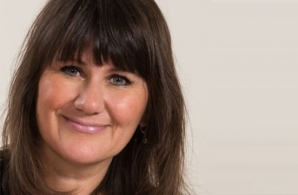 Change leadership skills are required in most managerial positions, yet many leaders say they are struggling to be effective at it.
Change leadership skills are required in most managerial positions, yet many leaders say they are struggling to be effective at it.
“You cannot escape change. It touches all organizations and all people. Competitors may be coming from outside your own field, and not all questions have answers. Even so, many people do not stop to think about their attitude to change, and how it impacts their ability to effectively lead change. It is a question every change leader should consider,” says Executive Coach Christel Berghäll.
Choose what kind of change leader you want to be
In the face of change, Berghäll divides a leader’s change attitudes into three rough categories: spectators, go with the flow, and proactive change leaders.
Spectators
If you wish to close your eyes from transformation and stay in your comfort zone, you are choosing to be a spectator.
“This is a dangerous choice. As the saying goes: ‘Change or be left behind’. Nevertheless, the behavior of some leaders may seem as if they are inclined toward this choice. It may be because they are too busy with operational issues and they do not stop and think. A passive attitude towards change may be an unconscious decision. For some, it may just be reluctance towards the unknown,” Berghäll describes.
“Research shows that an alarming amount of organizations are not reacting to digital transformation rapidly enough. Being caught up in today’s operational execution can be an illusion of effectiveness, if at the same time you are neglecting to see and act on what is waiting around the corner,” says Berghäll.
Go with the flow
The second possible change attitude is a reactive one, which Berghäll characterizes as going with the flow.
“This is a choice of moderate change leaders and organizations that follow and copy the actions of competitors. It is common in an environment where ‘Me too’ thinking persists. Sometimes you can see this attitude in for instance leaders who rely too much on industry experts and competitor moves, instead of valuing their own internal perspectives and insights,” Berghäll illustrates.
Proactive change leaders
The third, proactive attitude, is all about making use of opportunities that change presents, being strategic and creating the future.
“At this level, there is courage to challenge the status quo and step out of comfort zones. Proactive change leaders dare to listen to their gut as well, and not only rely facts. They dare to think bigger and differently,” Berghäll asserts.
“Foremost, they are also proactive in involving their teams early-on, because they know that the wisdom of the organization is key for creating the future – and key for creating ownership of the change,” she notes.
No one is born a change leader
There are no set rules on what kind of a person can be a successful change leader.
“It is a common misconception to assume that a person is born to be an effective change leader. Every leader can learn – and unlearn – competencies and mindset to grow into a great change leader,” Berghäll states.
Likewise, many people assume that a good change leader is bold and inspirational.
Personal development always starts from self-awareness."
“Many good change leaders are skilled facilitators of dialogue who know how to build the right kind of team around them to achieve change. Furthermore, great change leaders are often perceived as sincere and open for feedback,” she says.
Berghäll underlines that personal development always starts from self-awareness: daring to see yourself for who you are, your strengths and shortcomings.
“We all look at the world through our own pair of tinted glasses that have an enormous impact on how we operate. It is important to realize what beliefs, attitudes and thought patterns you have, and how they influence the way that you lead change,” Berghäll points out.
Learn to embrace change
Berghäll helps executives find their strengths as change leaders for example in Aalto EE’s Global Leader program. She helps participants grow as change leaders through three perspectives: me, my team, and my organization. Participants work on personal change leadership challenges and receive coaching and feedback from their peers.
“Once an executive has reached a higher level of self-awareness, it becomes easier for her or him to understand other people and to lead them through change,” Berghäll explains.
At the end of the day, change always happens one person at a time."
“There are so many hidden things you cannot immediately see about people. What kind of competence do they have? What is their capacity to change? What are their thoughts, feelings and needs? You need to know how to access this information in order to effectively lead the human side of the change,” she affirms.
Ultimately, Berghäll opens up the significance of understanding and making the most of change capacity on an organizational level.
“The more people there are, the more complex issues tend to get. Culture is extremely powerful. You must understand the current culture and how you can start shifting the culture to support the change initiative,” Berghäll states.
She reminds that at the end of the day, change always happens one person at a time.
Christel Berghäll is a PCC-certified Executive Coach at Step Beyond Oy. She coaches in Aalto EE's Global Leader Program's Leading Change module.
Read more about Christel Berghäll’s thoughts on change leadership: In the midst of change, do not forget people













